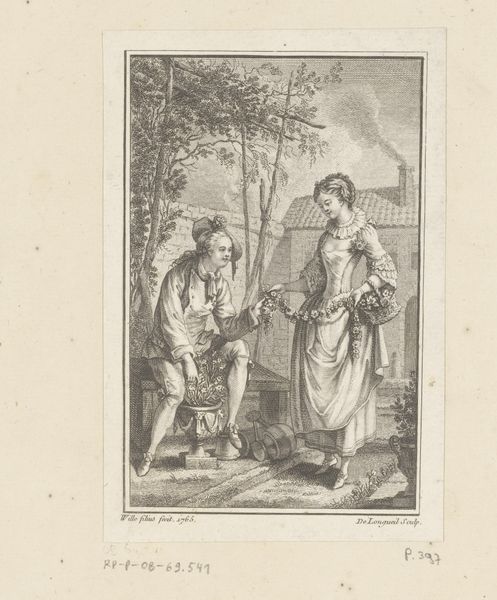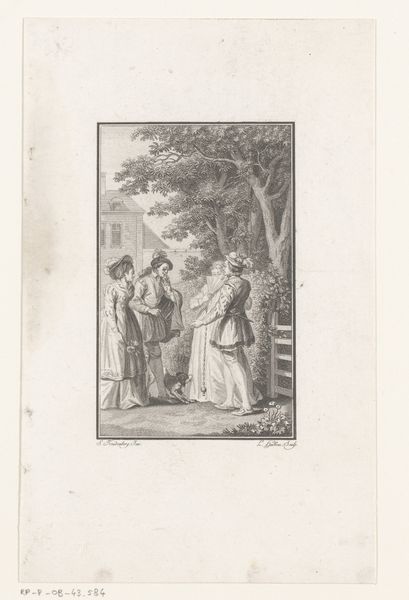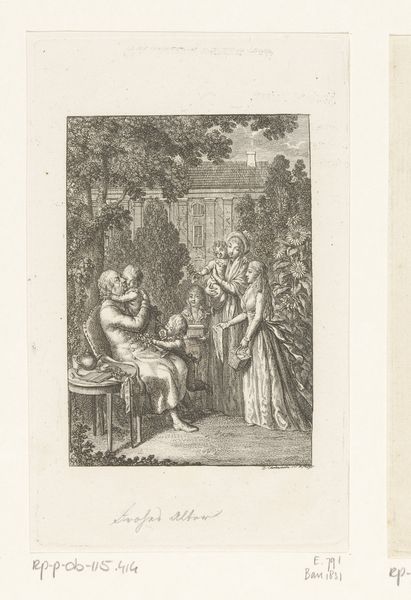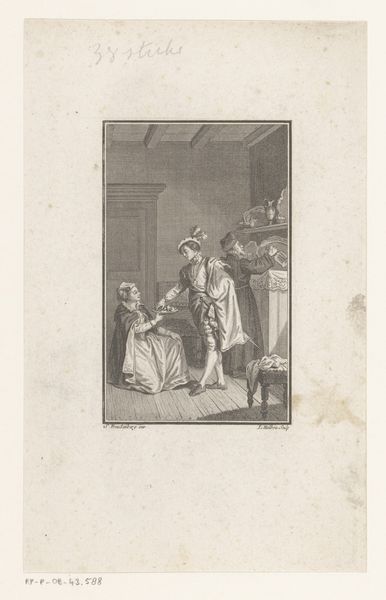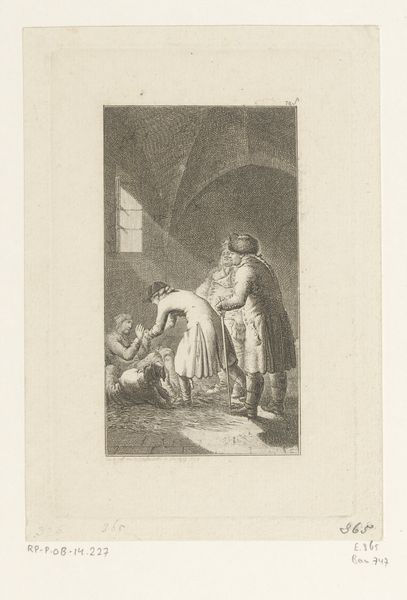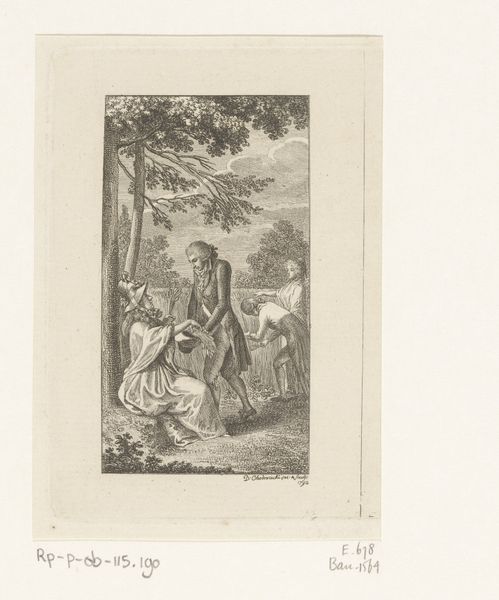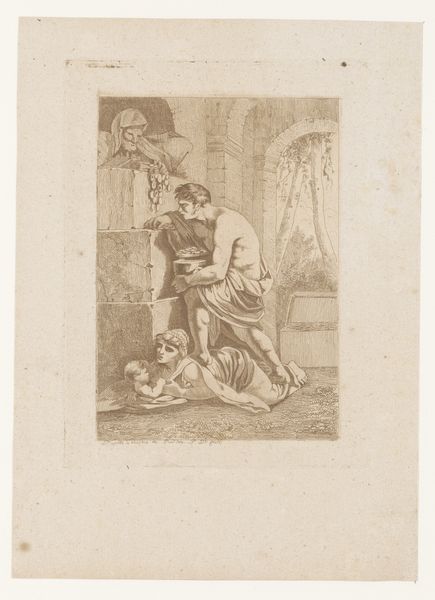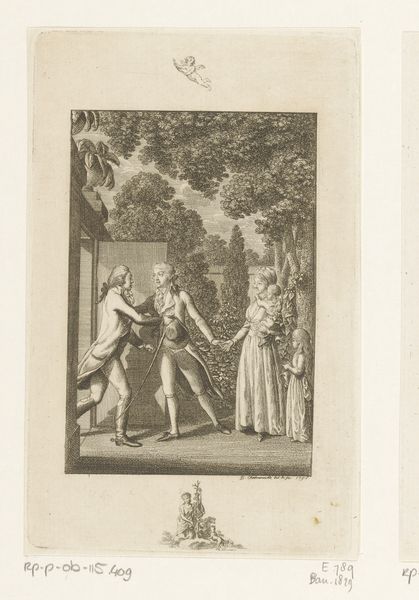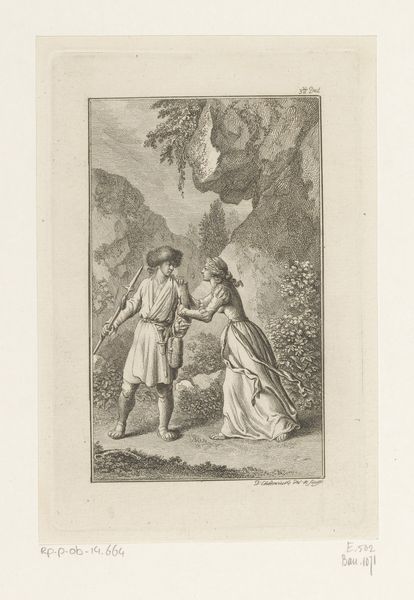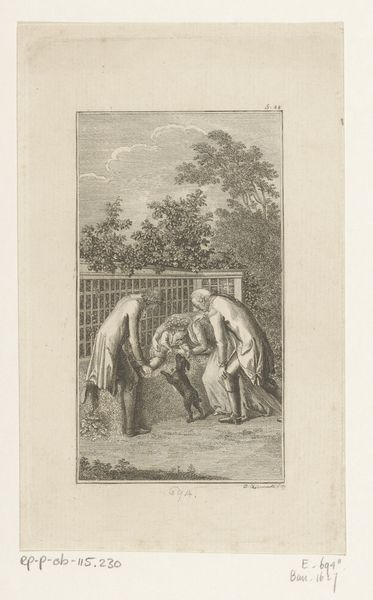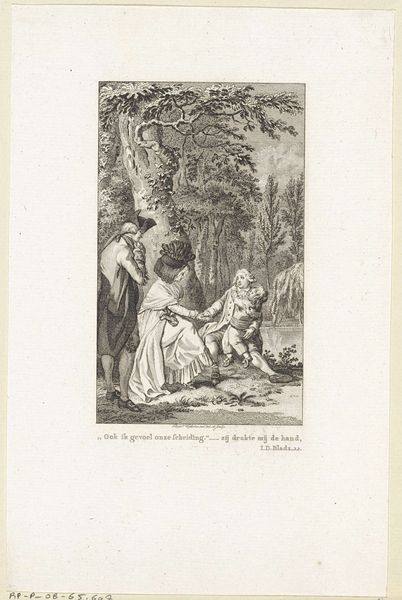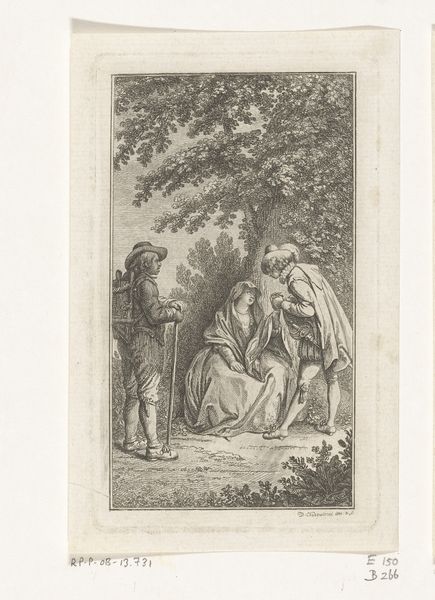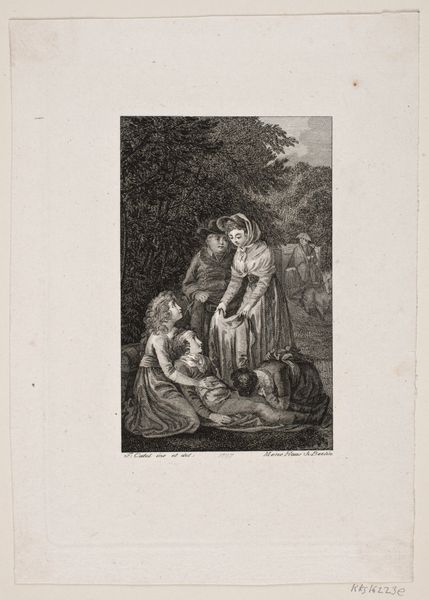
Dimensions: height 164 mm, width 112 mm
Copyright: Rijks Museum: Open Domain
Editor: This engraving from 1782, entitled "Gertrude asks Mr. Arner for Help," by Daniel Chodowiecki, feels staged, like a scene from a play. The figures seem frozen in their roles. What do you see in this piece? Curator: I see a potent commentary on social dynamics and power structures of the late 18th century. Look at Gertrude, holding a child, appealing to a seated man, presumably Mr. Arner. Her stance conveys vulnerability, while his posture suggests authority and perhaps even indifference. Chodowiecki was known for embedding social critique within seemingly simple genre scenes. Editor: So, you are saying that there might be more to the image than meets the eye? Curator: Exactly! Consider the historical context: The Enlightenment ideals were spreading, yet inequalities persisted. A woman needing to ask a man for help, especially in regards to children, highlights these societal tensions. Is the “help” purely charitable, or does it come with strings attached? What is Mr. Arner's role and responsibility? Editor: It's fascinating to think about. The way they're positioned—her standing, him seated at the table—definitely suggests an imbalance of power. But the scene also happens in a public setting; how does this play into our understanding? Curator: The setting softens the interaction somewhat; maybe Gertrude seeks justice or intervention, as if they're public figures in their community. Think about gender roles, class divisions, the very visible reliance on men during that time; consider it within broader narratives of social and political change during the Age of Revolutions. Chodowiecki invites us to critically examine these issues. Editor: I hadn’t considered the Enlightenment context. This opens up so many interesting questions about power, gender, and social responsibility. Curator: And that's the beauty of art! It makes us think and question, to engage with history beyond a simple surface reading.
Comments
No comments
Be the first to comment and join the conversation on the ultimate creative platform.
